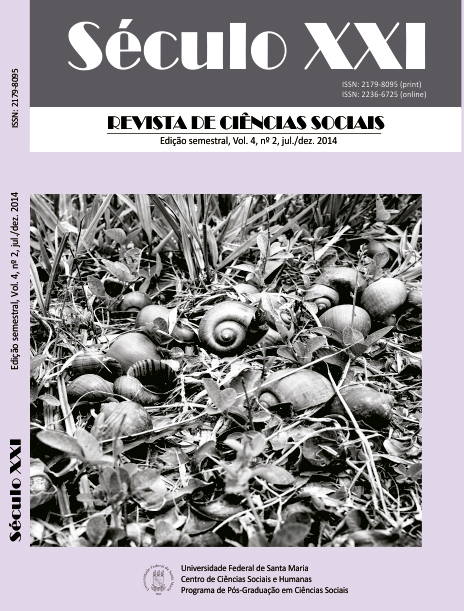The logic of care in sanitary strategies aimed at maternal child population
DOI:
https://doi.org/10.5902/2236672517045Keywords:
Ethnography, health, gender, care, nutritional deficitAbstract
This article is based on ethnographic research where sanitary actions destined to maternal and child populations are analyzed in the frame of care studies. Objectives: a) Identify discourses and practices used by agents of official health care system for nutritional deficits treatments, b) Explore patient population perceptions regarding official medical attention system, c) Identify local health care practices. Methodology: qualitative, participant observation, deep interviews and documentation techniques in rural regions in Oran department, Salta, Argentina. Results: PHC practices are included under governability studies framework and sustained in nuclear family patterns. Mothers are active patients who elaborate strategies for their children health care. From biomedical knowledge and traditional health practices, mediations emerge between sanitary agents and their patients. Conclusions: health care idea is critical to reveal the inequality spider web in which PHC politics addressed population vulnerability is built. Patients are active subjects who search for therapeutic instances where their body sensations are record and their subjectivity is respected.Downloads
Downloads
Published
How to Cite
Issue
Section
License
Authors who publish in this journal agree with the following terms:
1. Authors keep the copyrights and allow the journal the right of first publishing, having the paper simultaneously licensed by Creative Commons Attribution License that allows the sharing of the article – copyright recognized - and first publishing in this journal.
2. The journal is allowed to require the copyrights transfer, allowing the article to be used under noncommercial purposes, including the right to send the paper to Free Access or Paid databanks, not assuming the obligation to pass on the value charged from users to the authors.
3. Authors are allowed to take additional contracts separately for nonexclusive distribution of the paper’s version published in this journal (e.g. publishing in institutional repository or as book chapter), recognizing the copyright and first publishing in this journal.







